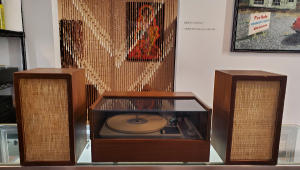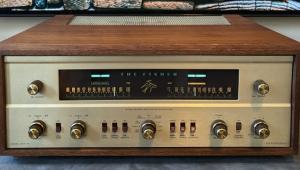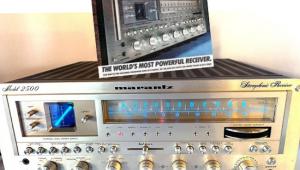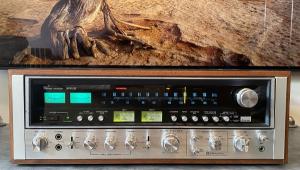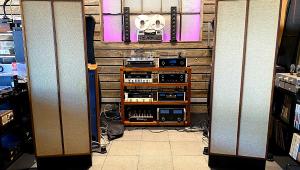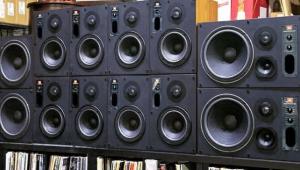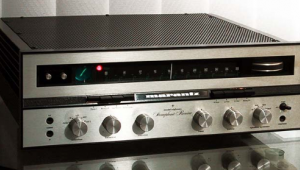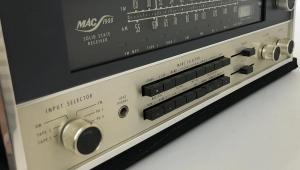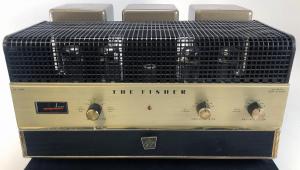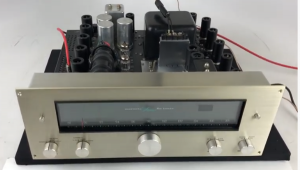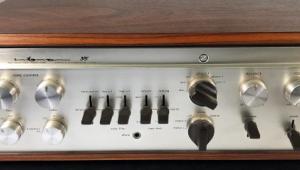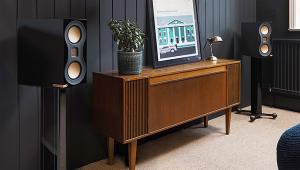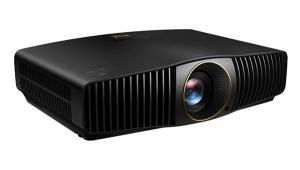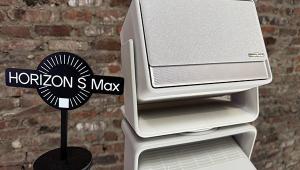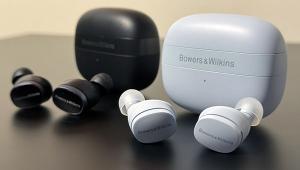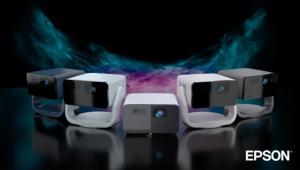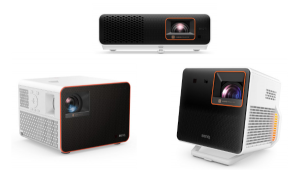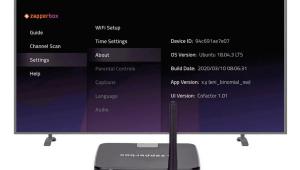Seeing that picture just made a certain phrase in my industry make sense. I work in camera for motion pictures and TV. When looking through the viewfinder, the operator sees frame lines on a ground glass, and in the past there were multiple lines. For example, there'd be markings for 1.85 ratio, and then an inner set of lines of 4:3 for TV. Those TV markings were often referred to as 'the pumpkin', and seeing that photo, well, the screen is kinda pumpkin shaped!
RCA CT-100 Color TV
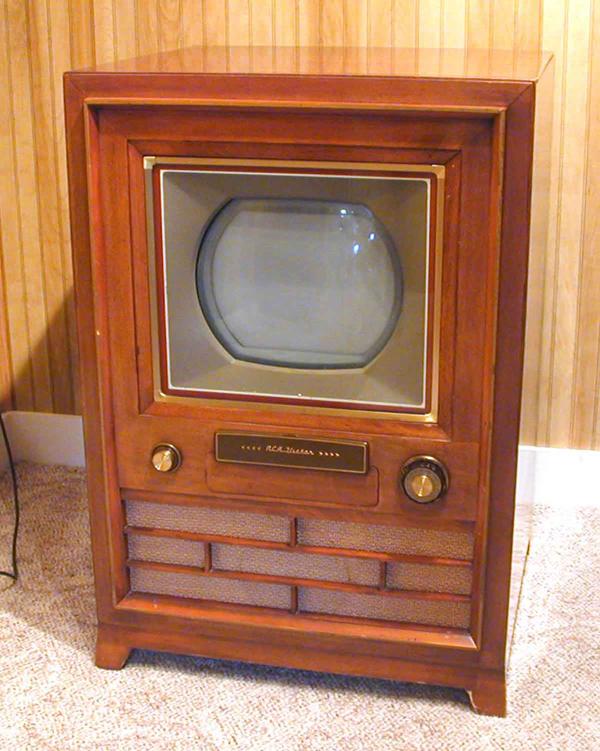
The RCA was decked out in a red mahogany cabinet, and its 15 inch "Tri-Color" picture tube had 600,000 phosphors. Collectors claim that working CT-100 sets still have exceptional color fidelity. The TV had 35 receiver tubes, plus the picture tube, 1,012 other parts, and 150 feet of wiring. The TVs were built in RCA's Bloomington, Indiana plant, and the production line was two city blocks long! A typical black and white set of the same period would have 400 parts and less than twenty tubes. The CT 100 was introduced in March, 1954 and sold for $1,000, only slightly less than the price of a new car, but the set's price dropped to $495 when RCA brought out the 21 inch CT-55 color TV in December, 1954. Less than 5,000 CT-100s were sold, and RCA reportedly lost money on every one.
Color broadcasting was limited to NBC stations in thirty five U.S. cities on the east and west coasts. Only three shows a week were in color, so RCA was eager to share its color technology secrets with other TV manufacturers to get more sets out there as quickly as possible. In fact, just as the CT-100 was being introduced RCA invited manufacturers to the Bloomington plant to observe the production line! RCA may have been the leader, but it knew only an installed base of millions of color sets would motivate the TV networks to rapidly expand their color programing.
Thanks to Steve McVoy and the Early Television Museum website for their help in preparing this report, and the use of the RCA CT-100 image.
- Log in or register to post comments


This reminds me of our old TV set. :) However where is the home theater ratings? :)

I am exploring this topic for a report I have to write. You have good content and I would like to know if you have any other posts about this?
solar powered path lights

This article is well thought out and full of good information. Many Thanks for taking time to bring this together into one article.
www.festive-lights.com

Your knowledge of this subject comes through clearly in this article. I love to read this kind of articles, I hope you will update it. Thank you for sharing it with me.
web design surrey

Your understanding with this topic will come via obviously in the following paragraphs. I enjoy look at this type of content articles, I think you'll may up-date this. Appreciate discussing that with me at night.
regards,
phlebotomy training in san diego

There are so many aspects to this, and you have opened up another train of thought for me to examine. Thank you for your insight.
seo infographic

I found useful information on this topic as I am working on a business project. Thank you posting relative information and its now becoming easier to complete this project.
beaufort

I have been interested in this topic for quite some time. I have been researching it for a couple of hours and found your post to be very interesting. Cheers.
shoplifting lawyer

In fact, just as the CT-100 was being introduced RCA invited manufacturers to the Bloomington plant to observe the production line! RCA may have been the leader... free cell phone spy software
cell phone spyware

Your understanding with this topic will come via obviously in the following paragraphs. I enjoy look at this type of content articles, I think you'll may up-date this. Appreciate discussing that with me at night.
phlebotomy training in MA

I thanks for spending time on discussing this, I feel so great about it and start learning about this topic.
phlebotomy certification

I found useful information on this topic as I am working on a business project. Thank you posting relative information and its now becoming easier to complete this project.
phlebotomy jobs
